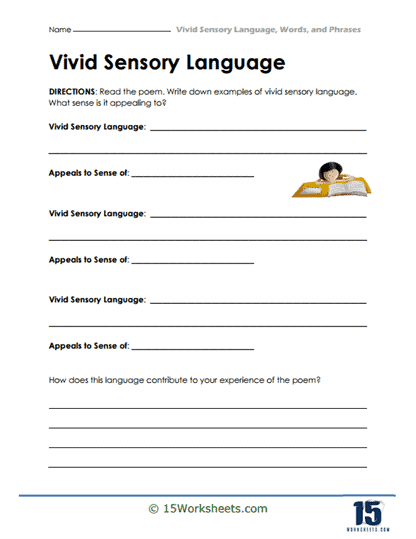Poem Reading

Worksheet Description
The “Vivid Sensory Language” worksheet is intended to enhance students’ reading and analytical skills by focusing on the use of descriptive language that appeals to the senses. Students are directed to read a poem and identify specific examples of language that vividly describe sensory experiences. For each example they find, they must determine which of the five senses the language appeals to—sight, sound, smell, touch, or taste—and consider how this sensory language contributes to the overall experience of the poem.
This worksheet is designed to teach students how to recognize and appreciate the role of sensory details in poetry and other forms of literature. By identifying instances of vivid sensory language, students learn to pay closer attention to the text and the imagery it evokes. This task helps them understand how descriptive language can enhance the emotional and imaginative impact of a poem. Furthermore, it encourages them to consider the importance of sensory details in their own writing and how such details can make their work more engaging and vivid for the reader.
